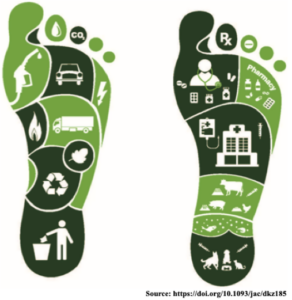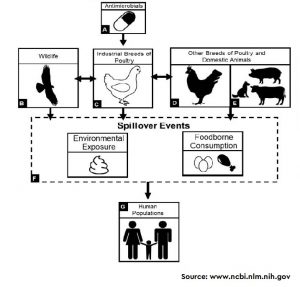Misuse of antibiotics in humans, animals and plants lead to the development of antibiotic resistance.
This phenomenon is not confined to humans or animals alone. Antibiotic resistance gets transferred
between humans, animals, and the environment through antibiotic resistance genes. The soil and
water contain diverse microbial communities. Antibiotic misuse coupled with unhygienic practices
exposes these communities to antibiotic-resistant genes. This renders them antibiotic-resistant and
further becomes links to the spread of the resistance. Accumulation of antibiotics in the
environment contributes to selective pressure on bacteria, creating a hotspot for resistance genes.
The various environmental hotspots, driving antibiotic resistance are wastewater systems,
pharmaceutical manufacturing sites, food and animal production sites in agriculture and
aquaculture, and clinical settings like hospitals.
Improper disposal of antibiotics and medical wastes from hospitals, leakage in septic systems, etc.,
facilitate the entry of antibiotic residues into the soil and groundwater. Improper disposal of
pharmaceutical wastes pollutes the natural environments like grasslands, water, and air.
Administering antibiotics to humans and animals results in antibiotics being excreted in the urine or
faeces, and thus, end up in the environment. Additionally, animal feed containing antibiotics may
directly seep into the soil or maybe excreted through animals into the soil. Overcrowded livestock
farms with improper disposal of animal wastes serve as hotspots for the transfer of antibiotic
resistance genes. Hospitals have the highest level of antimicrobial consumption and hence are
considered hotspots of AMR. Hospital effluents are expected to harbour a high number of resistant
bacteria and genes.
To read more, please visit the website of Microbiology (Link).
Environmental Hotspots for Antibiotic Resistance Genes







